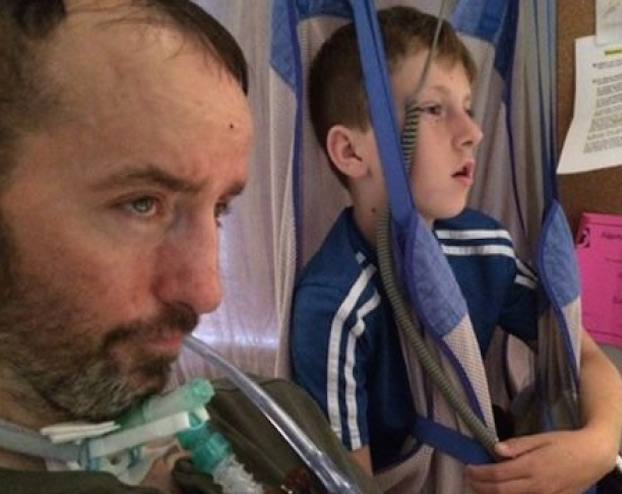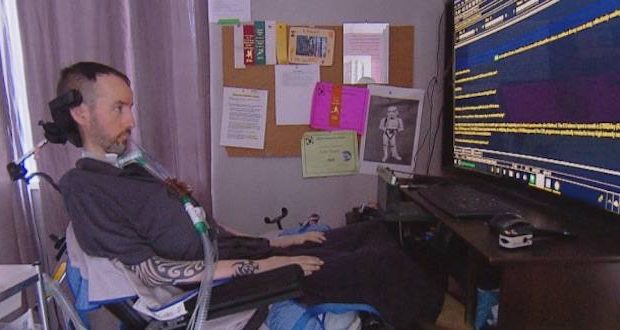Many Democrat politicians and other critics of the private American healthcare system point to Canadian healthcare as a model the U.S. should emulate. But one Canadian family is fighting the Canadian healthcare system. They’re saying the government-run healthcare system there failed their son who felt his only option was to die by physician-assisted suicide after his requests for home healthcare were denied.
The 41-year-old Sean Tagert died of suicide on Aug. 6 after Vancouver Coastal Health, a publicly-funded, government run healthcare provider, refused to cover the 24-hour in-home healthcare his doctor said he needed, the CBC reported earlier this month. The provider said it would cover 15 to 20 hours a day for care, but Tagert would be required to pay for the remaining hours at a cost of $7,905 a month, which he could not afford.
The death was announced on his personal Facebook page.
Tagert, who was diagnosed with ALS in March 2013 at age 36, had already wiped out his savings to pay for modifications to his home to accommodate a power wheelchair and a mechanical sling to help him get in and out of the shower. He also had an EyeWriter that enabled him to communicate with his family and caregivers.
While Vancouver Coastal Health refused to fully pay for Tagert’s 24-hour care, it did offer to cover his relocation to the George Pearson Centre, a residential living facility in Vancouver, nearly five hours away from his home in Powell River. Tagert declined, however, because it would’ve required him to be separated from his 11-year-old son, whom he shared custody with his ex-wife, and credited for helping him to keep living.

Sean Tagert, 41, chose suicide after the Canadian government-run healthcare would not pay for in-home health. He left behind an 11-year-old son. Tagert had been diagnosed with ALS, also known as Lou Gehrig.
Tagert had also expressed concerns that the facility being offered to him was not equipped to care for patients with ALS who are on a ventilator, unable to move their bodies, and require daily tracheostomy care, including suctioning fluid from the lungs.
In an interview with the CBC last year, Tagert’s physician, Dr. Stephen Burns, said his medical setup at home was “second to none.”
Burns also said Tagert had developed a communication system with his nurses and therapists who were used to providing his in-home care on a routine basis. The doctor further explained that the same quality of care could not be replicated at a large residential facility that does not offer one-on-one hourly care and has a “constantly changing staff.”
“People need to be cared for like human beings, at home … they should not be warehoused away in facilities,” Tagert’s mother, Trish Mennitti, told the CBC last year.
In a lengthy Facebook post published on Tagert’s page on Aug. 7, the day after he died by physician-assisted suicide, his friends and family pleaded with the government to “recognize the serious problems in its treatment of ALS patients and their families, and find real solutions for those already suffering unimaginably.”
They added: “Ensuring consistent care was a constant struggle and source of stress for Sean as a patient. While he succeeded, with the help of many, in piecing together a suitable care facility in his own home … gaining the 24-hour care he required was extremely difficult, especially as the provincial government refused to fully fund home care.”
“When you deny the necessary care, sometimes a person, out of despair, will ask for euthanasia,” said Alex Schadenberg, executive director of the Euthanasia Prevention Coalition, in an interview with LifeSiteNews. “I predicted this would happen, and sadly, it is now a reality.”
In an opinion piece published in the National Review, Wesley Smith, a senior fellow at the Discovery Institute’s Center on Human Exceptionalism, said euthanasia regimes are never about having the option to die, as it is often presented.
“A Canadian man disabled by ALS didn’t want to die now. He wanted to be cared for at home so he could be with his son,” Smith said.
“Nope. The government’s socialized health-care system refused to pay for all the care he needed. But it sure paid to kill him by euthanasia.”
Euthanasia and assisted suicide have become increasingly embraced in Canadian healthcare as cost-saving measures and have been advertised in hospital waiting rooms.
“MAiD is a medical service in Canada, whereby physicians and nurse practitioners help eligible patients fulfill their wish to end their suffering,” one such ad reads.
MAiD is short for the euphemism “medical aid in dying.”
–Metro Voice and wire services
 Metro Voice News Celebrating Faith, Family & Community
Metro Voice News Celebrating Faith, Family & Community









